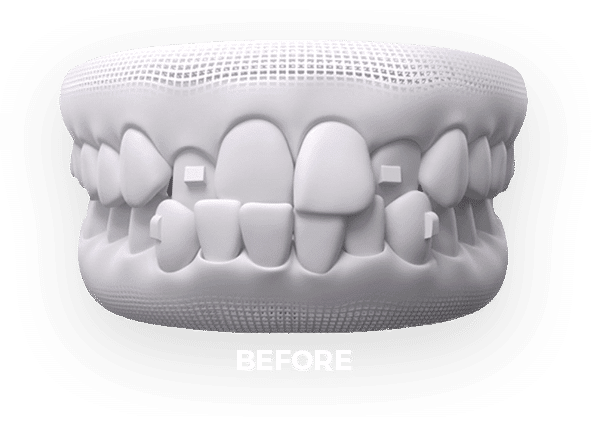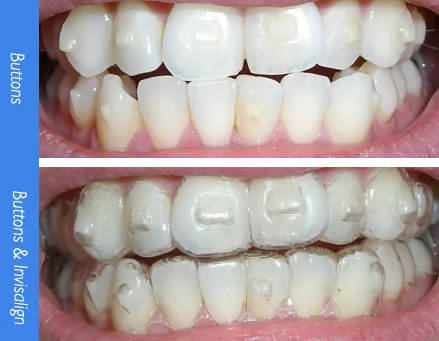Invisalign for Teens: A Modern Solution to Straightening Young Smiles
Invisalign for Teens: A Modern Solution to Straightening Young Smiles
Blog Article
Invisalign vs. Traditional Braces: Which Alternative Is Right for You?
When considering orthodontic treatment, the choice between Invisalign and typical dental braces provides several important factors that merit careful examination. Invisalign provides a discreet choice with detachable aligners, while conventional dental braces offer a more visible yet efficient remedy for severe misalignment.
Summary of Therapy Choices

In contrast, standard braces include steel brackets and cables that are bound to the teeth. This technique applies continual stress with time to attain positioning. While effective for intricate orthodontic issues, standard dental braces need routine brows through for changes and can posture obstacles in maintaining oral hygiene as a result of the trouble of cleaning up around cords and brackets.
Both alternatives have their benefits, and the selection frequently pivots on certain oral problems, lifestyle preferences, and person compliance. Inevitably, getting in touch with an orthodontic expert is important for identifying the most suitable treatment strategy customized to private demands. Recognizing the nuances of each option can considerably influence the general success of orthodontic therapy.
Aesthetic Factors To Consider
A substantial element affecting the choice between Invisalign and typical dental braces is the visual allure each therapy supplies. Invisalign aligners are crafted from clear plastic, making them essentially unnoticeable when put on.
In comparison, traditional dental braces consist of metal brackets and cables, which can be more recognizable. While improvements in orthodontic technology have brought about the advancement of smaller brackets and colored elastics, traditional dental braces still maintain a more obvious profile. For some individuals, the presence of braces may hinder them from seeking needed treatment.
Eventually, the selection between Invisalign and standard dental braces may depend upon personal preferences regarding aesthetics. Clients that focus on discretion usually lean toward Invisalign, while those who are less concerned regarding visibility might select conventional braces. Understanding the aesthetic ramifications of each alternative is important for making an educated decision that aligns with one's way of life and choices.
Convenience and Convenience

In regards to benefit, Invisalign aligners are removable, making it possible for clients to appreciate their favored foods without limitation and maintain optimum dental hygiene. Cleaning and flossing are streamlined, as the aligners can be taken out throughout these routines, whereas typical dental braces require mindful navigating around brackets and cords.
In addition, Invisalign's modern system permits less orthodontic gos to. Patients normally receive several sets of aligners at the same time, which can streamline the therapy process and minimize time invested in the orthodontist's chair. On the other hand, standard dental braces require routine modifications, making them less practical for those with busy routines. Invisalign. Overall, the convenience and convenience of Invisalign make it an enticing choice for lots of individuals seeking orthodontic therapy.
Treatment Duration and Efficiency
While both Invisalign and traditional dental braces work in correcting dental imbalances, the period of therapy can differ dramatically in between the 2 choices. Typically, Invisalign treatment can take anywhere from 12 to 18 months, depending upon the intricacy of the instance. The clear aligners function by gradually changing teeth into their preferred placements, and normal follow-ups with an orthodontist help ensure progression remains on the important source right track.
On the other hand, standard dental braces usually require a longer dedication, usually varying from 18 months to 3 years. This results from their set nature and the usage of cables and braces, which can be more effective for severe misalignments and browse around here complex cases (Invisalign). The treatment efficiency of conventional braces is well-documented, as they allow for precise adjustments and better control over tooth activity
Inevitably, the choice between Invisalign and traditional braces may depend upon both the awaited therapy period and the specific dental issues at hand. Consulting with an orthodontist is essential, as they can offer customized recommendations based on specific requirements, making sure the selected method lines up with preferred results and timeframes.
Cost Contrast and Insurance Policy Choices
Cost plays a significant role in the decision-making procedure for individuals considering orthodontic therapy, whether opting for Invisalign or typical dental braces. On average, the price of Invisalign varieties from $3,000 to $8,000, while traditional dental braces normally cost in between $2,000 and $6,000. Elements affecting these costs consist of the complexity of the instance, the duration of therapy, and geographical place.
Insurance policy protection can significantly affect out-of-pocket expenses. Several dental insurance policy strategies provide partial coverage for orthodontic treatments, yet the specifics can vary widely. It is crucial for patients to assess their insurance coverage to identify the level of coverage for either alternative. Generally, standard dental braces might be a lot more frequently covered by insurance policy plans compared to Invisalign, which some insurance companies classify as learn this here now a cosmetic procedure.
In addition, several orthodontic practices offer flexible repayment strategies, making both therapy choices extra accessible. Clients ought to make inquiries about potential financing options and discounts for upfront payments. Evaluating the total expense, consisting of insurance coverage advantages and repayment plans, is vital for making a notified decision that lines up with both visual choices and spending plan factors to consider.

Conclusion
In summary, the choice between Invisalign and traditional braces depends upon numerous aspects, consisting of visual preferences, comfort, therapy period, and expense. Invisalign provides a discreet, removable option that facilitates dental health and dietary flexibility, while traditional dental braces may be much more suitable for intricate oral problems and frequently come at a reduced cost point. Eventually, examination with an orthodontist is necessary to evaluate specific scenarios and identify one of the most proper treatment alternative for accomplishing optimal oral alignment.
When considering orthodontic therapy, the choice in between Invisalign and conventional dental braces provides several essential variables that warrant careful analysis.Comparing Invisalign and typical braces discloses distinctive therapy options for orthodontic modification.While both Invisalign and traditional dental braces are effective in remedying oral misalignments, the period of therapy can differ significantly between the two choices.Price plays a considerable duty in the decision-making process for individuals taking into consideration orthodontic treatment, whether choosing for Invisalign or typical braces.In summary, the selection between Invisalign and conventional dental braces hinges on numerous factors, including visual choices, comfort, treatment period, and price.
Report this page